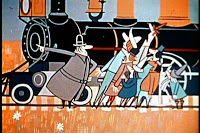
Oddball Films presents Oh Canada! Visionary Cinema from our Neighbors to the North, with a program of exquisite short documentaries, animation and experimental works, all from Canadians, eh! Clever, hypnotic, mind-blowing, and often politically progressive this program highlights the work of some of the best innovators Canadian cinema has to offer. The brilliant experimental animator and director of the National Film Board of Canada, Norman McLaren gives us two breathtaking works of pixilation animation. The first, Pas De Deux (1968), superimposes the minute movements of two glowing ballet dancers to create one of the most beautiful and ethereal films of the collection. In Neighbors (1952), McLaren presents a much darker world (in beautiful color) where neighbors come to words, then blows, then bombs over who gets the beautiful flower that grows between their houses. Raymond Garceau documents the annual Quebec spruce Log Drive (1957) with song and incredible, awe-inspiring imagery. Evelyn Lambert's Mr. Frog Went A-Courtin' (1974) is simultaneously beautiful, charming and slightly disturbing. Almost a decade before Ray and Charles Eames made their seminal film Powers of Ten, Eva Szasz directed Cosmic Zoom (1968), beginning in close up on the Ottawa River and zooming out to reveal the Earth and the stars. Grant Munro's clever anti-war short Toys (1966) brings to life war toys before horrified children's eyes through stop-motion animation. Arthur Lipsett gives us a pulsing, eye-popping vision of consumerism and pop culture in Very Nice, Very Nice (1961). The charming cartoon The Romance of Transportation in Canada (1952) gives an entertaining history on Canada's westward expansion and urbanization. For the early birds, feast on the cute overload that is Ponies (1972), a simply lovely wordless meditation on a herd of frolicking ponies. After you're all America'd out, come on down to Oddball to celebrate Canada's history of visionary cinema.
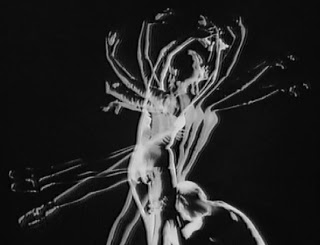

Log Drive (B+W, 1957, Raymond Garceau)
In words and music this breath-taking film brings to the screen a great seasonal event of the Québec spruce forest--the log drive. A ballad singer comments musically on this annual spectacle. Water-borne, the vast aggregation of logs moves downstream, spurred by dynamite and sharp-tipped cant hooks, tossed and twirled by the boots of leaping men. Directed by Raymond Garceau for the National Film Board of Canada, this is one of the most beautiful and awe inspiring film docs in their collection.
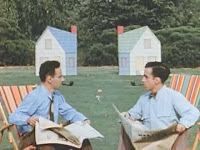
Neighbors (Color, 1952, Norman McLaren)
Utilizing the new technique of animating live actors (fellow NFB animators Paul Ladouceur and Grant Munro), the Oscar-winning Neighbours is McLaren’s most famous and important film. A parable of aggression and war, two men sit peacefully in lawn chairs when a flower appears on the boundary of their properties. In the quarrel that ensues the flower is destroyed, and the men turn to demons, destroying everything, including themselves.
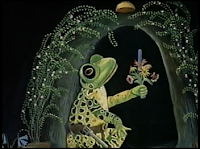
Mr. Frog Went A Courtin’ (Color, 1974, Evelyn Lambert)
Another frequent collaborator with Norman McLaren, Evelyn Lambert forged a distinct whimsical style with dark undertones utilizing cutouts. This gorgeous short features a fantastically rendered menagerie, a touching interspecies love story and an abrupt and shocking ending.

Cosmic Zoom (Color, 1968, Eva Szasz)
The film starts with an aerial image of a boy rowing a boat on the Ottawa River. The movement then freezes and view slowly zooms out, revealing more of the landscape all the time. The continuous zoom-out takes the viewer on a journey from Earth, past the Moon, the planets of the Solar System, the Milky Way and out into the far reaches of the known universe. The process is then reversed, and the view zooms back through space to Earth, returning to the boy on the boat. It then zooms in to the back of the boy's hand, where a mosquito is resting. It zooms into the insect's proboscis and on into the microscopic world, concluding at nucleolus level. It then zooms back out to the original view of the boy on the boat.
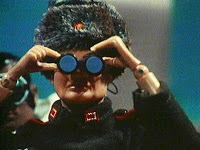
Toys (Color, 1966, Grant Munro)
Frequent Norman McLaren collaborator and fellow Canadian, directed this clever anti-war and anti-war toy short using the stop-motion technique. Excited children gather around the windows of a toy store. At first they're enraptured when the toys come to life, but when the GI Joes begin a bloody battle, it's a different story.
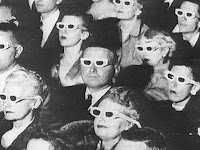
Directed by Colin Low, animated by Wolf Koenig and Robert Verrall and narrated by Guy Glover “Romance…” was the National Film Board’s first attempt at a UPA style of animation for an educational film. Despite the rather dry subject, it has generous humor a beautiful mid-century style, and features a great bop/cool jazz soundtrack by Eldon Rathburn.
For the Early Birds:
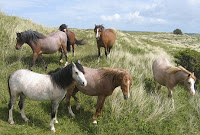
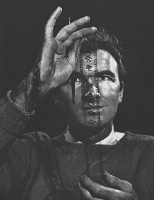
About the National Film Board of Canada



